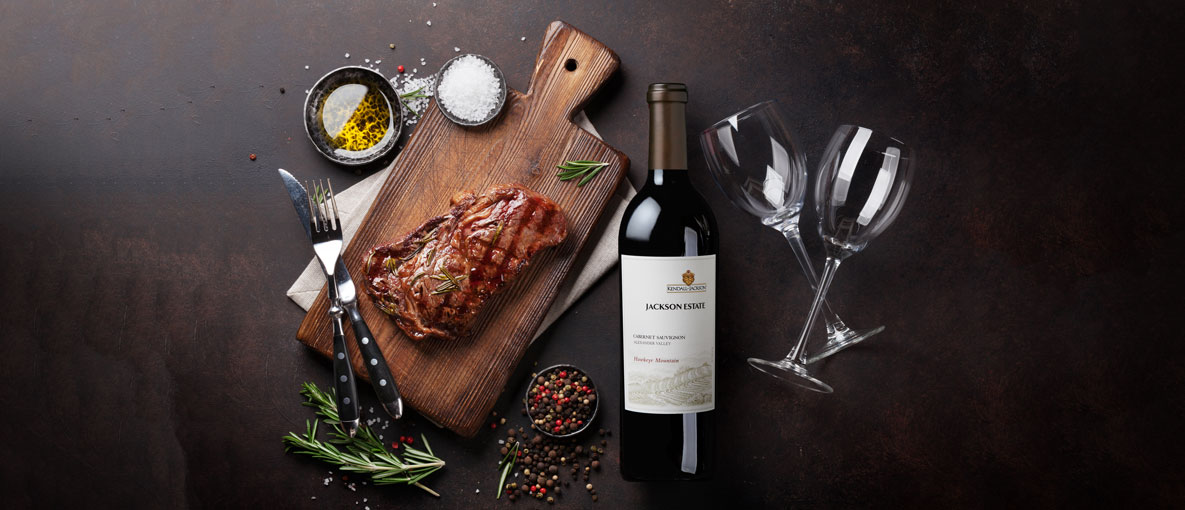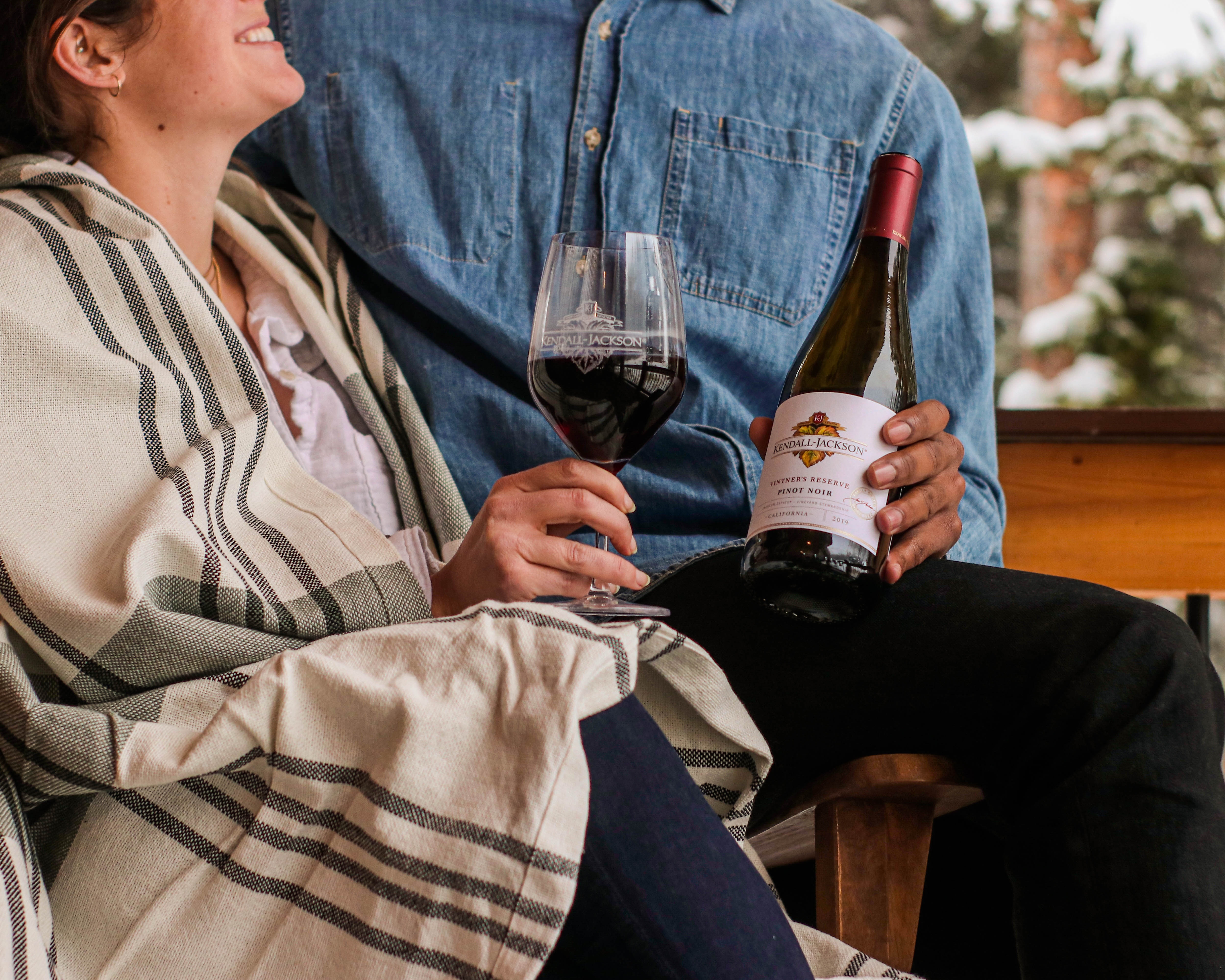Pairing Wine with Winter Fruits and Vegetables
Winter fruits and vegetables sound like an oxymoron to many folks. Yeah, there’s good citrus, apples and pears, but we eat those year-round. Potatoes? Ditto. A quick glance at the average American diet suggests that winter season produce doesn’t have the unique signatures of spring, summer and fall.
But as Mark Twain so brightly said, “Twenty years from now you will be more disappointed by the things that you didn’t do than by the ones you did do....” So, let’s “throw off the bowlines, sail away from safe harbor, catch the trade winds” in our pots, sauté pans, baking dishes and plates. It’s time to explore and discover pairing wine with winter fruits and vegetables. Because, as it turns out, there is a wide array of winter fruits and vegetables for wine pairings!
FOLLOWING SEASONAL PRODUCE WITH Kendall-Jackson’s FARM-TO-TABLE PHILOSOPHY
At Kendall-Jackson, pairing vegetables and fruits with wine happens all year, even when the the Annual Farm-to-Table Dinner Series comes to an end. These merry, farm-to-fork gatherings re-launch - as usual - in May.
In the interim, you can keep up with what’s cooking in the K-J kitchens with the new Jackson Family Wines cookbook, Season. Through this collection of recipes and reflections, Chefs Justin Wangler, Tracey Shepos Cenami and Robert Nieto collaborate with Culinary Gardener Tucker Taylor to transform the best raw materials of Sonoma into delicious creations for the table. Unlike almost every other team in the world growing then making great food, this quartet reverse-engineers their food to fit the diverse line-up of Kendall-Jackson wines.
WHY PAIR WINE WITH WINTER PRODUCE
Living with seasonal fruits and vegetables isn’t just about shopping at your local farmer’s market. It means you can shop there and use the products for more than decorating your holiday table. (Nature creates fascinating objects of art with those multi-colored and funky-shaped gourds, but you can nourish your family with them, too.)
A lucky benefit of many winter vegetables is that they are generous in sweetness and starch, making them easy for your family to love once they hit the table. As ever, how they are cooked and accompanied make them more or less healthy. The good news is that many veggies and even fruits have yoga-like flexibility to work in various preparations, providing options both to watch and expand the waistline.
Moreover, with winter season produce, we can often feed our families for less. Because many of these vegetables and fruits are less well-known, they often don’t command the highest prices. Additionally, because fewer people buy certain of these winter veggies and fruits, they rarely come in pre-prepped packaging, further saving the wallet for other purchases made during the merriest portion of the winter season.
Now, because these veggies and fruits often require more work to prepare, it’s a blessing that they also tend to store well for much longer than produce from other seasons. (This also applies to many fall vegetables and fruits that continue to thrive through the winter months.) Check out this , so that, when you’re too tired or have too many other seasonal obligations on your hands to cook a meal from scratch, you won’t have to feel guilty about letting these sit around a few more days – or even weeks, in some cases!
When you are ready to cook a meal – or even just a portion of one – from scratch, the fact that these winter veggies and fruits often need more preparation time has two upsides. First, kitchen prep time pairs very well with a glass of wine! Second, the warmth of the oven and the scents from the stovetop as dinner slowly cooks is one of the most comforting, wintery wonders of making meals with winter vegetables and fruits.
WINE PAIRINGS FOR WINTER FRUITS AND VEGETABLES
While there are useful rules of thumb to follow for winter fruit pairings with wine and winter vegetable wine pairings, what is most important is the overall harmony of the pairing. It’s worth considering each of these angles when thinking about your seasonal wine pairings. Just think of Mr. Gump and his shrimp… there are so many ways to transform even a single ingredient!
Color matching is probably one of the most familiar principles of wine and food pairing. Generally, lighter colored fruits and vegetables work best with lighter colored wines. Hence came the adage “White with fish, red with meat.” Yet and again, it is best not to approach wine pairings with winter fruits and vegetables from one angle.
Similarly to the color concept, you can apply a philosophy of flavor intensity. The more generous the aromatics or flavors of a food, the more intense a wine’s concentration should be to create an even keeled pairing.
This train of thought follows into cooking technique: the greater the impact of the preparation, seasoning and finishing, the more flavorful a wine should be to pair with that dish. Foods with minimal prep tend to work better with lighter wines.
Finally, the effect of technique spills into winemaking. Different applications of heat to the same food change its texture and flavor. In winemaking, the application of heat is mostly used on the barrels in which wines are vinified and aged. The more intensely the barrels are toasted, the more impact they will have on the wines that fill them, when the barrels are new or little used. For winter vegetable and wine pairings, this means that wines with no or little new oak use tend to work better with lighter and brighter winter dishes while those that see more new oak need heartier and – usually – higher fat-driven food pairings.
Generally, combinations of winter fruits with wine and winter vegetables with wine are easier than those from the spring and summer seasons as winter produce options are more often cooked. There is one caveat, which is the bitterness in certain greens. When combined with a protein or starch, the innate bitterness will usually even out for winter wine pairings.
SPECIAL MENTION OF A FAVORITE WINTER WINE PAIRING INGREDIENT - Truffles
Ideally, every winter food and wine pairing would include at least one meal with truffles. They are one of the greatest winter ingredients for wine pairing!
However, truffles aren’t vegetables. Truffles are fungi, like mushrooms, except that truffles grow underground.
Truffles are generally categorized into winter truffles and summer truffles. Winter truffles are more delicate. They don’t like to be cooked. Winter truffles are almost exclusively used as a “finishing” element to a dish. That is, they are usually shaved over a dish just before it is served.
Classic winter wine pairings with truffles are Chardonnay (check out our ultimate Chardonnay and wine pairing blog) and Pinot Noir. It’s a snazzy winter recipe ingredient that is a brilliant winter wine match with the . There is a visually beautiful recipe in the Season cookbook called “Stained Glass” Spinach Pasta with Black Truffle that would be utterly sublime way to showcase winter truffles, whether or not you use Kendall-Jackson’s Sonoma County truffles. To make it an even bigger winner, this is a brilliant vegetarian food and wine pairing.
FAVORITE WINE PAIRINGS FOR WINTER FRUITS AND VEGETABLES
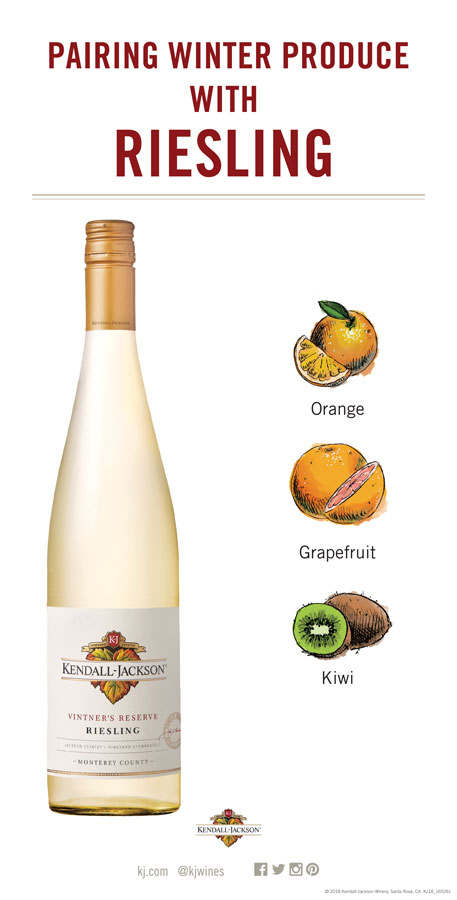
Riesling
Produce ideas: Grapefruits, lemons, kumquats, oranges, tangerines, kiwis
Recipe suggestion: Citrus Salad With Arugula & Ricotta Salata
Inspiration: Riesling is a famously aromatic grape with bright, zesty fruit flavors and floral aromas. Many of Riesling’s inherent fruit scents can be found in the citrus family, which are winter fruits found in this salad. Additionally, Riesling has palate-tingling acidity that will bridge to the vibrancy of the citrus as well as the perky spice of the arugula. Finally, ricotta salata will give this winter fruit and veggie wine pairing zip through its salty contrast. P.S. Riesling also makes for a brilliant wine pairing with fruit and cheese, but that’s not a recipe!
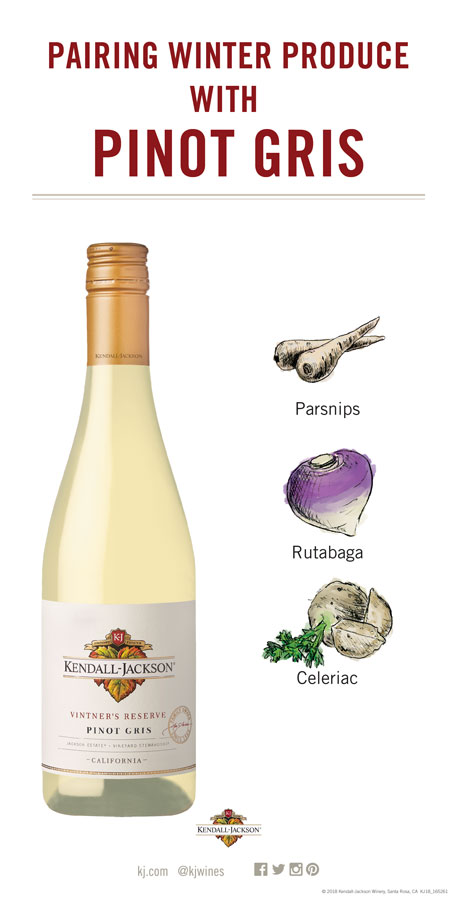
Pinot Gris
Produce ideas: Parsnips, carrots, rutabaga, turnips, sunchoke/Jerusalem artichoke, celtuce, celeriac
Recipe suggestion: Seared Scallops with Carrot, Celtuce, Favas and Savory Granola
Inspiration: Pinot Gris is – in a good way – the chicken of wine. It is very malleable and adapts to a surprisingly wide variety of pairings. This is due to its subdued apple and pear tones accompanied by earthy ones. (That’s a great attribute of Pinot Gris; it’s not just fruit and wine; it’s savory tones and wine.) Furthermore, it generally has an expansive, lightly mouthcoating palate that blends nicely with mildly rich foods like scallops, favas and granola. P.S. The Season cookbook has two recipes that should link up brilliantly with winter white wine vegetables: Gnocchi with Spigarello, Parsnips & Caramelized Onions and Butter-Braised Turnips with Mustard Mascarpone.
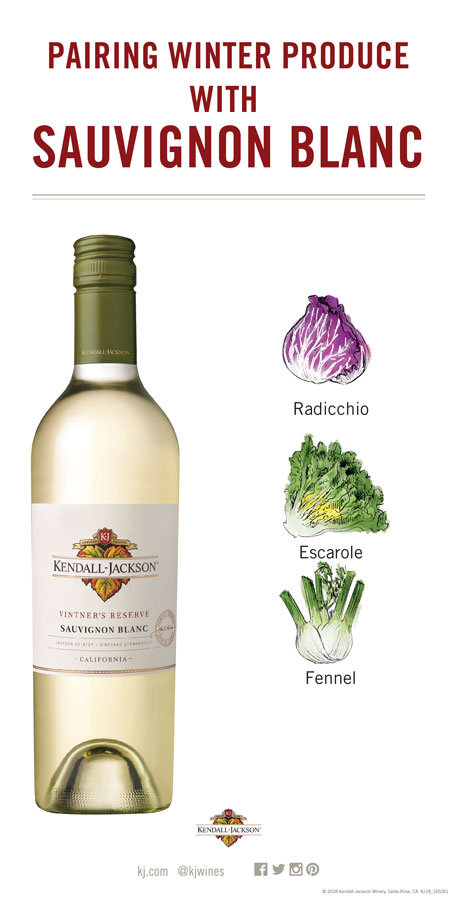
Sauvignon Blanc
Produce ideas: Radicchio, escarole, endive, fennel
Recipe suggestion: Artichoke Ceviche in Belgian Endive
Inspiration: Artichokes are infamously hard to pair with wine and endive doesn’t fall far behind thanks to its distinct bitterness. Happily, Sauvignon Blanc comes to the rescue with its pithy dryness and distinct, almost raucous, acidity to counter the bite of both of these arbitrary elements. Moreover, the jalapeno, cilantro and lime in this dish will connect magnetically with this wine’s herbal tones. P.S.: this is a classy and clean wine pairing for vegetarians and vegans alike.
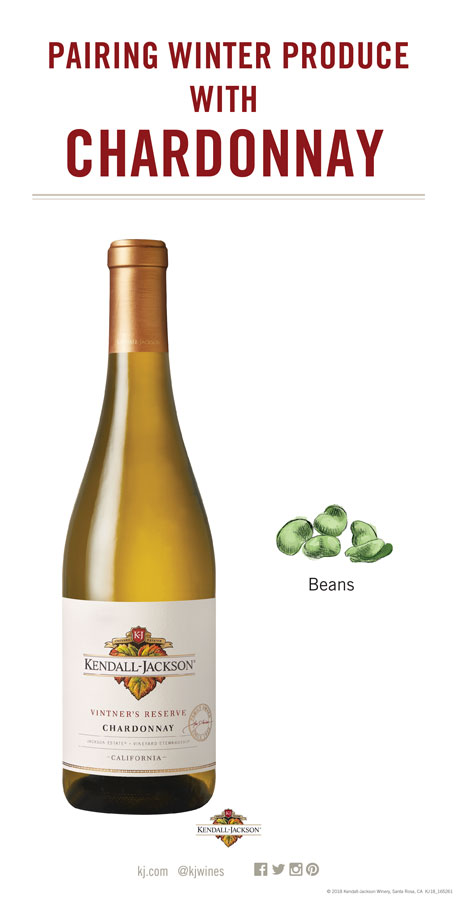
Chardonnay
Produce ideas: Potatoes, truffles, beans (technically a legume, but beans are a wonderful element for wine pairing vegetarian style, including all types of dried and canned beans – consider Cannellini, Butter, Great Northern, Lima and Pinto)
Recipe suggestion: Cream of Green Bean Soup
Inspiration: While “green bean” is the biggest idea that leaps out of this recipe name, a look at the ingredient list shows that there are several underlying factors that drive the pairing. In fact, the green beans provide fresh lift for the underlying base of potatoes, chicken broth and cream or half-and-half. That tripod base has the flavor elements akin to the savory, earthy tones of Chardonnay as well as its rounded textural ones.
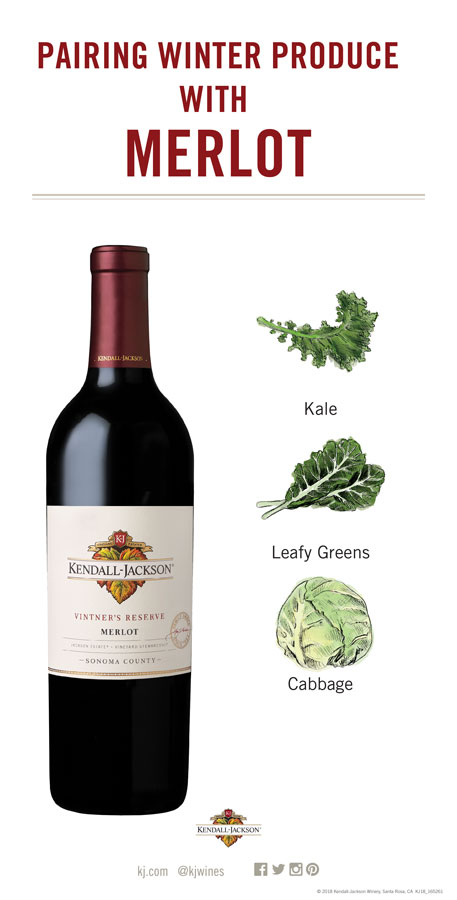
Merlot
Produce ideas: Kale, leafy greens, cabbage
Recipe suggestion: Kale, Ricotta and Mushroom Toast
Inspiration: The “green” qualities of kale match up to Merlot’s vaguely (and attractively) leafy side while the earthy qualities of the mushrooms contrast nicely with Merlot’s overt plum and cherry tones. More importantly, perhaps is the robust mid-palate for which Merlot is known. It easily supports the creaminess of the ricotta, the denseness of the country-style bread and the mushrooms’ potent fiber. P.S. Bonus points can be earned here as this is a top vegetarian recipe with red wine pairings!
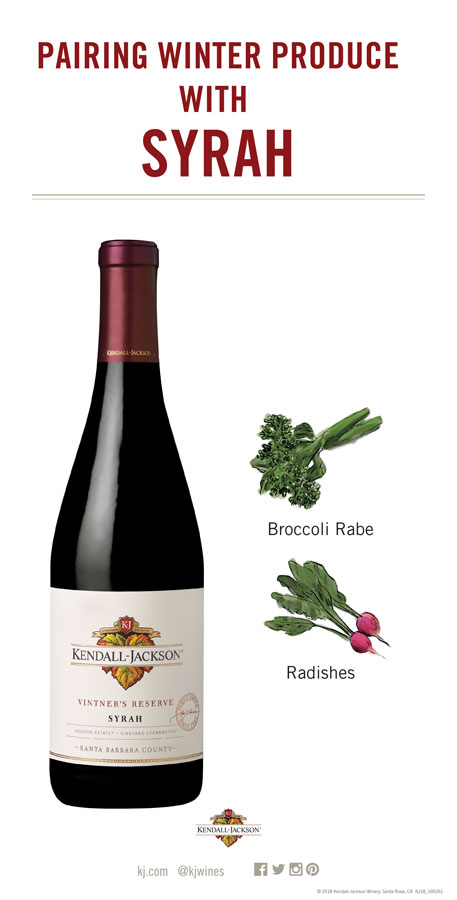
Syrah
Produce ideas: Broccoli rabe, radishes
Recipe suggestion: Broccoli Rabe with Sausage
Inspiration: Syrah is a grape variety known for its spicy edge, hence its instant pair-ability with hot Italian sausage as well as the zippy, pinch-y and bitter flavors of broccoli rabe. Furthermore, the intense blackberry flavors of Syrah contribute to the brooding, wild intensity of this combo.
YOUR INSPIRATIONS OF WINE PAIRINGS WITH WINTER VEGETABLES AND FRUIT
Do you have winter fruit and vegetable pairings with wine that you would love to share? We’d love to hear your inspirations!
Christy Canterbury is a Master of Wine, journalist, speaker and judge based in New York City. In 2014, she was short-listed for the Roederer Online Wine Communicator of the Year Award. Her work has been published in Decanter, Wine Enthusiast, Edible Green Mountains, Wine Searcher, Food Arts, Snooth, Beverage Media, TimAtkin.com, Civiltà del Bere, Wine Business Monthly, TASTED, Selectus Wines and in other outlets.

